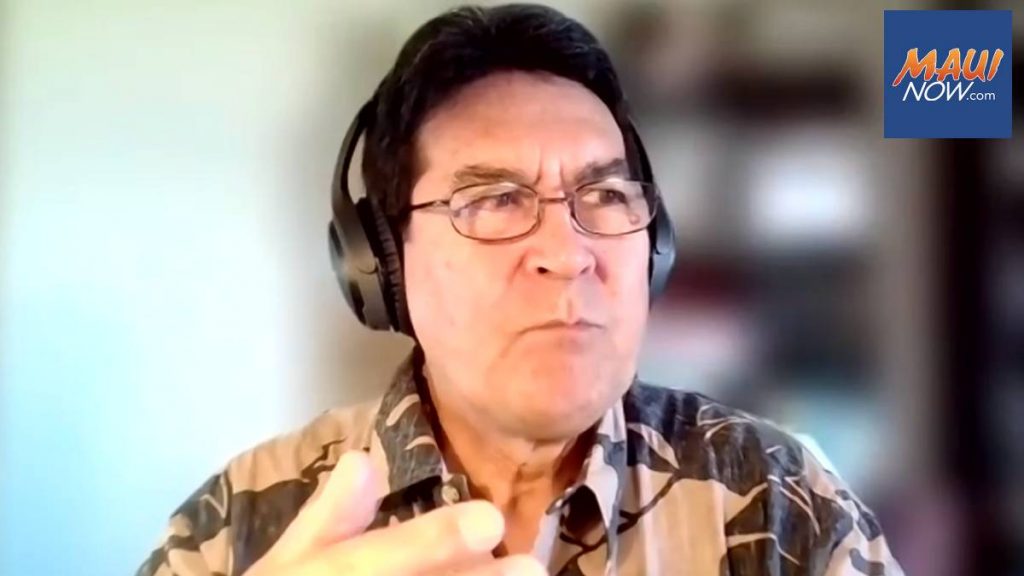Hawaiʻi economist: Working from home likely to remain for post-pandemic Aloha State

After the height of remote work due to the pandemic in 2020, Hawai’i now has about 20% of its workforce still working remotely, at home or in a hybrid arrangement — and that may not change much in the future, according to Hawai’i economist Paul Brewbaker.
Remote work trends and other workplace changes were discussed by Brewbaker during Hawai’i Economic Association’s “Pandemic Debrief: Workplace and Workforce Structural Changes” on Thursday.
West Maui, Kauaʻi and even Moloka’i became Zoom towns during the pandemic, which are communities that saw a population increase due to an influx of remote workers.
Pre-COVID, 90% of workers never or almost never worked from home. As of fall 2022, about 20% of Hawaiʻi workers were still teleworking. Brewbaker doesn’t think that number will drop below 10% in the future.
“There is more opportunity than ever and it will persist for remote work,” Brewbaker said. “I don’t think it’s been fully realized.”
Other than more satisfied employees, the only benefit of telework for employers is increased productivity.
Employers are still deciding whether they will mandate workers to return to the office, though, and there is much to be “sorted out.”
Brewbaker said he thinks there could be productivity gains for employers who continue remote work.
“I think what we will see on net is productivity gain, but we may not have as prevalent a remote work workforce,” he said. “I’m optimistic about the potential productivity gains.”
According to Google GPS smartphone mobility data, the amount of time in the workplace for Hawai’i residents declined by 50% during the height of the pandemic. That number increased slightly to 30% as of last October, indicating that people are spending more time at home and less time in conventional workplaces compared with years before the pandemic.
Also, there is more interest in remote work. Last year, Google searches for “working from home” at least doubled compared with pre-COVID data. During the height of COVID, the searches peaked.
Some employees said they would be willing to accept up to a 5% to 7% reduction in pay in order to acquire an additional day of working from home, Brewbaker said.
Jobs that allow the most teleworking include computer and mathematical, legal, business and financial operations, life, physical and social science, architecture and engineering, media and other careers.
“The near- and medium-term effect on firm-level TFP (total factor productivity) was more likely to be positive for firms where more of the work can be done from home, and where sales do not depend as much on face-to-face contact with customers,” according to John Fernald, senior research advisor for the Federal Reserve Bank of San Francisco and professor. “In contrast, for firms where it is harder to work from home and where sales do depend on face-to-face contact, firms expected more negative near- and medium-term effects on TFP.”
William Beach, US Bureau of Labor Statistics commissioner, said the workplace is changing faster today than at any time since the industrial revolution.
Brewbaker pointed to Beach’s assertions that the pandemic accelerated a “structural change in the economy” through telework, automation, global value chains and other factors.
Remote work patterns matter, especially for commercial space and housing, Brewbaker said.
“Can you imagine 20% of Ala Moana not being needed?” he asked.
While the job opening rate is in decline, the labor market conditions remain tight, Brewbaker added.
In 2022, there were two jobs open for every unemployed person. Plus, the Great Resignation of 2021 gave workers bargaining power. Because of the biological risk of customer-facing jobs, especially ones with no sick leave, no vacation and low base wages, people left for better pay and benefits. Not to mention, early retirement among boomers whose age and health status made them more vulnerable left holes in the labor market.
“Long COVID alone could explain a couple percentage points of the loss of the workforce,” Brewbaker said. “If it hasn’t already, it will.”
Brewbaker is the principal of TZ Economics, a Hawai‘i consultancy doing corporate work, development impact analysis and litigation support. His background is in research on the Hawai‘i economy and in country risk and financial risk analytics from 25 years as a commercial bank economist. He received his bachelor’s degree from Stanford University and received his doctorate degree from the University of Hawai‘i, both in economics. Brewbakers holds the Certified Business Economist designation from the National Association for Business Economics.
The Hawaiʻi Economic Association is a nonprofit that aims to educate and inform members and guests about local, national and international economic issues. The group’s 180-plus members comprise economists, academics, business professionals, government officials and individuals from a variety of Hawaiʻi industries.
For information about Hawai’i Economic Association panels and forums, visit Hawai’i Economic Association.









